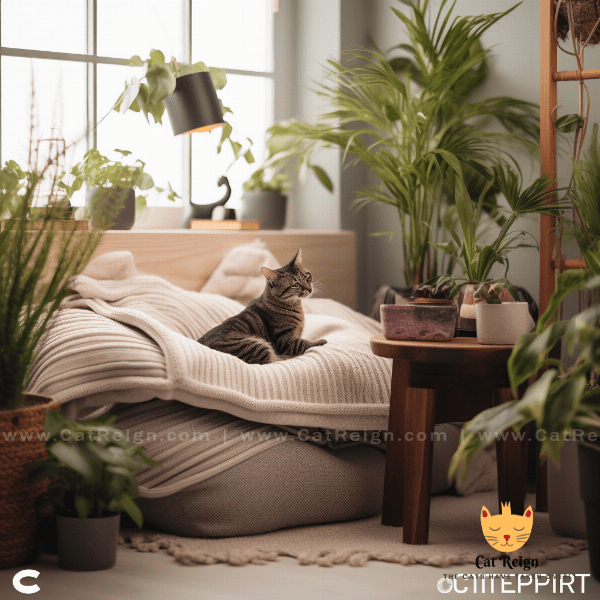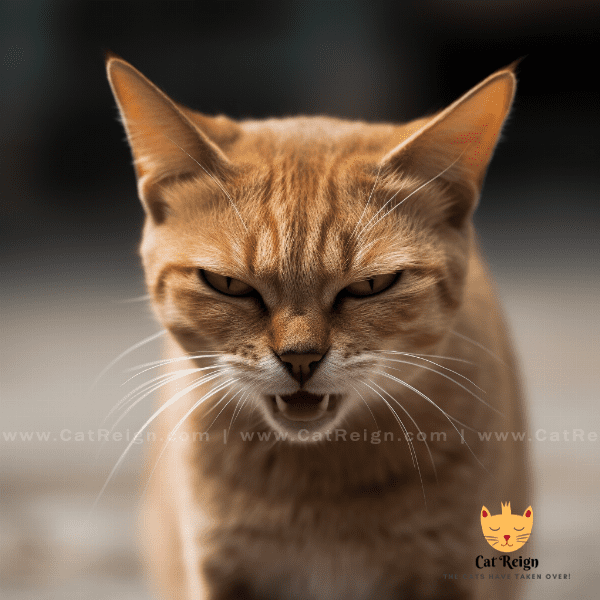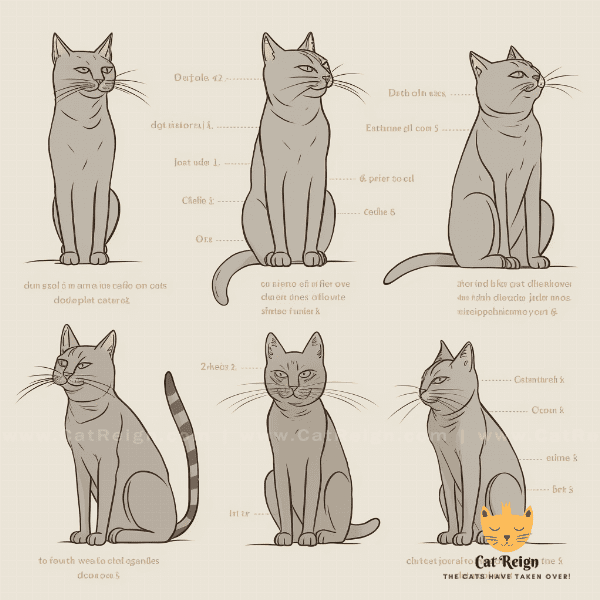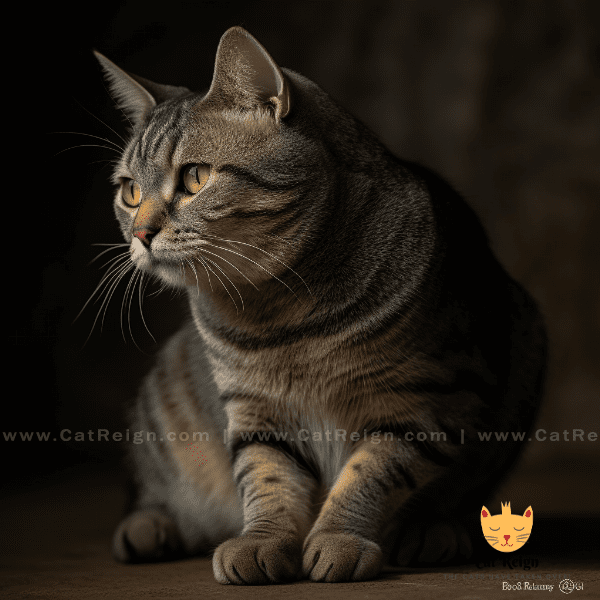Table of Contents
- The Art of Cat Napping: Understanding Feline Sleep Patterns
- Reading the Signs: Decoding Your Cat’s Sleeping Positions
- The Language of Cat Dreams: What Your Cat’s Sleep Behavior Reveals
- The Purrfect Sleeping Environment: Creating a Comfortable Bed for Your Cat
- Disrupting the Nap Zone: How to Avoid Disturbing Your Sleeping Cat
- Cat Naps vs. Deep Sleep: Knowing When Your Cat Needs Rest
- Health Risks of Poor Sleep: Identifying Sleep Disorders in Cats
- Sleepy Kittens: Understanding the Sleeping Habits of Young Cats
- Sleeping Beauties: The Evolution of Cats and Their Sleep Patterns
- Cat Napping 101: Tips and Tricks for Helping Your Cat Sleep Better
The Art of Cat Napping: Understanding Feline Sleep Patterns
Cats are expert nappers, and they can spend up to 16 hours a day sleeping! However, their sleep patterns are different from ours, and it’s important to understand them to ensure your cat is getting the rest they need.
How Much Do Cats Sleep?
Cats are crepuscular animals, which means they’re most active during dawn and dusk. During the rest of the day, they sleep for several hours at a time. While the amount of sleep a cat needs can vary depending on their age and activity level, most adult cats need between 12 and 16 hours of sleep a day.
The Different Stages of Cat Sleep
Like humans, cats go through different stages of sleep. They have two main types of sleep: REM (rapid eye movement) sleep and non-REM sleep. During REM sleep, cats’ eyes move rapidly, and they experience vivid dreams. In non-REM sleep, their bodies relax, and their breathing slows down.
What Interrupts a Cat’s Sleep?
Cats are light sleepers and can be easily awakened. Loud noises, sudden movements, and changes in the environment can all interrupt their sleep. It’s important to provide your cat with a quiet and comfortable sleeping environment to ensure they get the rest they need.
Cat Napping Habits
Cats can fall asleep anywhere and in any position. They may sleep curled up in a ball, stretched out on their side, or even upside down! While it may seem like your cat is sleeping all day, they’re actually light sleepers and are always aware of their surroundings. It’s not uncommon for cats to take short naps throughout the day, rather than sleeping for long periods at a time.
The Importance of Cat Napping
Sleep is crucial for your cat’s overall health and wellbeing. It helps them conserve energy, reduce stress, and recharge their minds and bodies. Ensuring your cat has a comfortable and safe place to sleep is essential for their health and happiness.
Understanding your cat’s sleep patterns and habits can help you create a peaceful sleeping environment and ensure they get the rest they need. By providing your cat with the right conditions for sleeping, you’ll help them stay healthy, happy, and full of energy.

Reading the Signs: Decoding Your Cat’s Sleeping Positions
Your cat’s sleeping position can tell you a lot about how they’re feeling. By paying attention to their body language, you can get a glimpse into their mood and personality.
What Your Cat’s Sleeping Position Reveals
When your cat is sleeping, they’re at their most vulnerable. The position they choose to sleep in can indicate how safe and secure they feel in their environment. For example, if your cat is sleeping on their back with their belly exposed, it means they feel relaxed and comfortable in their surroundings.
The Different Sleeping Positions
Cats have a variety of sleeping positions, and each one can indicate a different mood or personality trait. Some common sleeping positions include:
- Curled up: This position is common for cats and indicates that they feel secure and protected. It’s also a way for them to conserve body heat.
- Stretched out: When a cat sleeps stretched out on their side, it means they’re feeling relaxed and comfortable in their surroundings.
- Ball: Cats may curl up into a ball when they’re feeling anxious or stressed. This position helps them protect their vital organs and feel more secure.
- Tucked in: When a cat sleeps with their paws tucked under their body, it means they’re feeling cold or trying to conserve heat.
What Your Cat’s Sleeping Position Says About Their Personality
Your cat’s sleeping position can also reveal their personality. For example, cats who prefer to sleep with their back to you may be independent and aloof, while cats who sleep curled up in your lap may be more affectionate and social.
Understanding Your Cat’s Sleeping Habits
By paying attention to your cat’s sleeping habits and positions, you can gain insight into their mood and wellbeing. If you notice a change in their sleeping patterns, such as sleeping more or less than usual, it could be a sign that something is wrong. It’s important to monitor your cat’s sleeping habits and talk to your veterinarian if you have any concerns.
In summary, your cat’s sleeping position can reveal a lot about their mood, personality, and overall wellbeing. By paying attention to their body language and sleeping habits, you can gain a better understanding of your feline friend and ensure they’re happy and healthy.

The Language of Cat Dreams: What Your Cat’s Sleep Behavior Reveals
Have you ever wondered what your cat is dreaming about while they’re sleeping? While we can’t know for sure what’s going on in their minds, their sleep behavior can give us some clues.
Signs Your Cat is Dreaming
When cats are in REM sleep, they may twitch, move their paws, or make small sounds. This is a sign that they’re dreaming. While we don’t know for sure what they’re dreaming about, it’s likely that they’re reliving their experiences from the day.
What Your Cat’s Sleep Behavior Reveals
The way your cat sleeps can also reveal a lot about their personality and mood. For example, if your cat is sleeping with their paws tucked under their body, it could mean they’re feeling cold or trying to conserve heat. If they’re sleeping in a position that allows them to quickly jump up and react, it could indicate that they’re feeling anxious or on edge.
The Importance of Quality Sleep
Just like humans, cats need quality sleep to stay healthy and happy. Ensuring that your cat has a comfortable and safe place to sleep can help them get the rest they need. If you notice that your cat is having trouble sleeping, it could be a sign of an underlying health issue. Talk to your veterinarian if you have any concerns.
How to Create a Comfortable Sleeping Environment for Your Cat
To ensure that your cat gets the best sleep possible, it’s important to create a comfortable sleeping environment. Provide them with a cozy bed in a quiet and peaceful area of your home. Consider using a bed that’s made from natural materials, such as wool or cotton, as these materials are breathable and provide insulation.
.
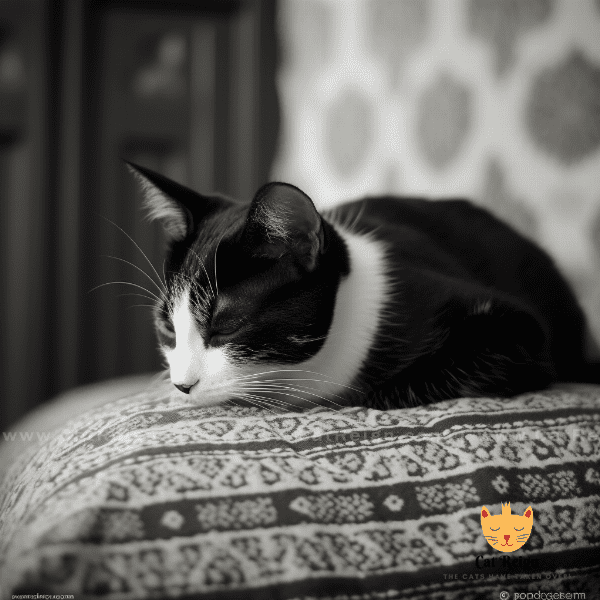
The Purrfect Sleeping Environment: Creating a Comfortable Bed for Your Cat
Creating a comfortable sleeping environment for your cat is essential for their health and wellbeing. By providing them with a cozy and safe place to sleep, you can ensure that they get the rest they need.
Choosing the Right Bed
When choosing a bed for your cat, consider their sleeping habits and preferences. Some cats prefer to sleep in a warm and cozy space, while others like to stretch out and sleep in a cooler environment. You should also consider the size of your cat and choose a bed that’s big enough for them to comfortably move around in.
Natural Materials
Natural materials, such as wool, cotton, and bamboo, are great choices for cat beds. These materials are breathable, which helps regulate your cat’s body temperature and prevents overheating. They’re also soft and comfortable, providing your cat with a cozy place to sleep.
Location, Location, Location
When deciding where to place your cat’s bed, consider their personality and behavior. If your cat is shy or anxious, place their bed in a quiet and secluded area of your home. If they’re social and outgoing, place their bed in an area where they can observe and interact with you and your family.
Keeping It Clean
It’s important to keep your cat’s bed clean to prevent the buildup of bacteria and odors. Wash their bedding regularly in hot water and replace it if it becomes worn or damaged. Vacuum and wipe down the bed frame to remove any hair or debris.
Providing Additional Comfort
To provide your cat with extra comfort, consider adding a soft blanket or pillow to their bed. You can also use a heated bed to provide warmth and comfort during colder months.
.

Disrupting the Nap Zone: How to Avoid Disturbing Your Sleeping Cat
Cats are light sleepers and can be easily awakened. Disrupting their sleep can cause stress and anxiety, and it’s important to provide them with a quiet and peaceful sleeping environment.
Signs Your Cat is Sleeping
It’s important to be able to recognize when your cat is sleeping so you can avoid disturbing them. Signs that your cat is sleeping include closed eyes, slow and steady breathing, and a relaxed body.
Creating a Quiet Environment
To ensure that your cat gets the rest they need, create a quiet and peaceful sleeping environment. Turn off loud noises, such as televisions or music, and close doors to prevent outside noises from disrupting their sleep.
Avoiding Sudden Movements
Cats are easily startled, and sudden movements can disrupt their sleep. Avoid making sudden movements around your cat when they’re sleeping. Instead, move slowly and quietly around them to avoid disturbing them.
Providing a Safe Space
Providing your cat with a safe and comfortable sleeping space can help them feel more secure and relaxed. Place their bed in a quiet and secluded area of your home where they won’t be disturbed by other pets or people.
.

Cat Naps vs. Deep Sleep: Knowing When Your Cat Needs Rest
Understanding your cat’s sleep patterns can help you determine when they need rest and how much rest they need. Cats have different stages of sleep, and each one serves a different purpose.
How Much Sleep Do Cats Need?
Most adult cats need between 12 to 16 hours of sleep a day, but the amount of sleep they need can vary depending on their age and activity level. Kittens and senior cats may need more sleep, while younger and more active cats may need less.
Signs Your Cat Needs Rest
It’s important to be able to recognize when your cat needs rest. Signs that your cat needs rest include sleeping more than usual, lethargy, and a decrease in activity level. If you notice any of these signs, provide your cat with a comfortable place to sleep and monitor their sleep habits.
.
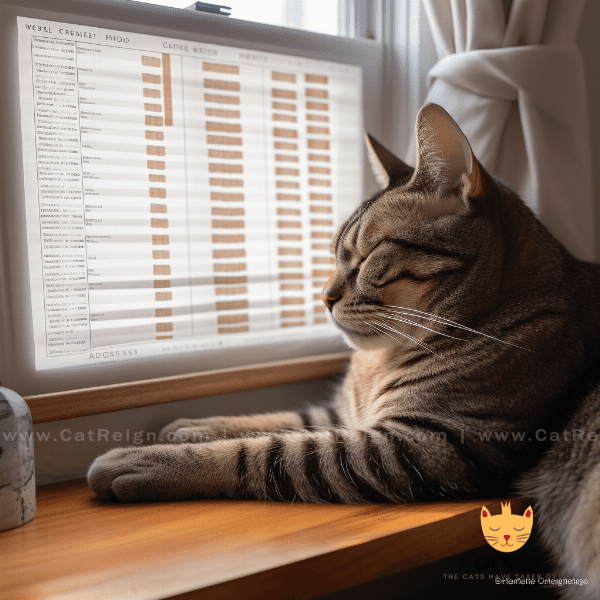
Health Risks of Poor Sleep: Identifying Sleep Disorders in Cats
Just like humans, cats can suffer from sleep disorders that can impact their health and wellbeing. It’s important to be able to identify the signs of sleep disorders in cats and take action to address them.
Common Sleep Disorders in Cats
Some common sleep disorders in cats include insomnia, sleep apnea, and restless leg syndrome. Insomnia is characterized by difficulty falling asleep or staying asleep, while sleep apnea causes cats to stop breathing during sleep. Restless leg syndrome causes cats to move their legs and paws uncontrollably during sleep.
Signs of Sleep Disorders
If your cat is experiencing a sleep disorder, they may exhibit signs such as excessive daytime sleepiness, irritability, and changes in appetite or behavior. They may also have trouble falling asleep or staying asleep, and may exhibit unusual sleep behaviors, such as snoring or twitching.
Health Risks of Poor Sleep
Poor sleep can have serious health consequences for cats. It can weaken their immune system, increase their risk of infections and diseases, and cause behavioral issues such as aggression and anxiety. It’s important to address sleep disorders in cats to prevent these health risks.
.
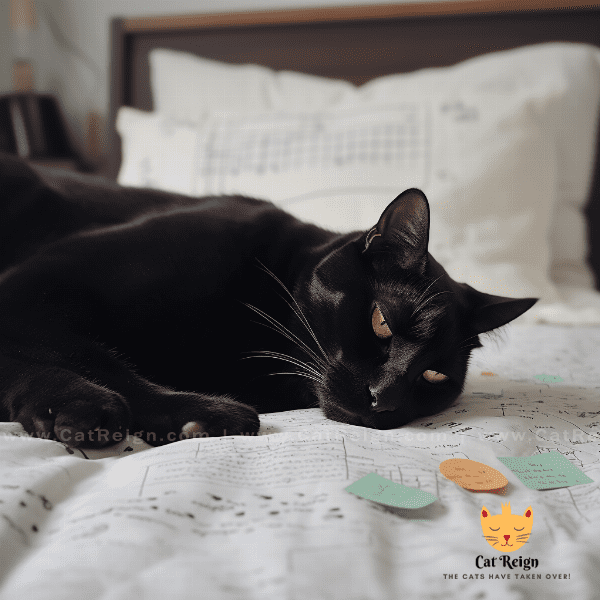
Sleepy Kittens: Understanding the Sleeping Habits of Young Cats
Kittens are known for their love of sleep, but understanding their sleeping habits can help you provide them with the rest they need to grow and develop.
How Much Sleep Do Kittens Need?
Kittens need a lot of sleep to support their rapid growth and development. They can sleep up to 20 hours a day, with some kittens sleeping even more than that. As they grow older, their sleep needs will decrease.
The Importance of Playtime
While kittens may sleep for most of the day, it’s important to provide them with regular playtime to help them develop their coordination and social skills. Interactive playtime with toys, such as feather wands or balls, can provide stimulation and exercise for your kitten.
Monitoring Your Kitten’s Sleep Habits
Monitoring your kitten’s sleep habits can help you identify any issues that may be affecting their sleep. If you notice that your kitten is sleeping more than usual or has trouble waking up, it could be a sign of an underlying health issue. Talk to your veterinarian if you have any concerns.
.

Sleeping Beauties: The Evolution of Cats and Their Sleep Patterns
Cats have been evolving for millions of years, and their sleep patterns have adapted along with them. Understanding the evolution of cats and their sleep patterns can provide insight into why they sleep the way they do.
Wild Ancestors
Cats’ wild ancestors, such as lions and tigers, were nocturnal hunters who slept during the day to conserve energy. Sleeping during the day also helped them avoid the heat of the sun in their native habitats.
Domestication
As cats became domesticated, their sleep patterns adapted to fit their new environments. Cats that lived with humans began to adapt to a diurnal schedule, meaning they were awake during the day and slept at night to coincide with their human companions’ schedules.
Cat Naps
Cats have developed the ability to take short naps throughout the day, which allows them to rest and conserve energy. These naps, which usually last between 15 to 30 minutes, are important for cats of all ages and activity levels.
Deep Sleep
Deep sleep is essential for cats to repair and regenerate their bodies and process information from the day. Cats enter deep sleep about 20 minutes after falling asleep and stay in this stage for about 5 to 15 minutes.
Health Benefits of Sleep
Getting enough quality sleep is essential for cats to maintain their health and wellbeing. It can strengthen their immune system, improve their mental and emotional health, and help prevent behavioral issues.
.
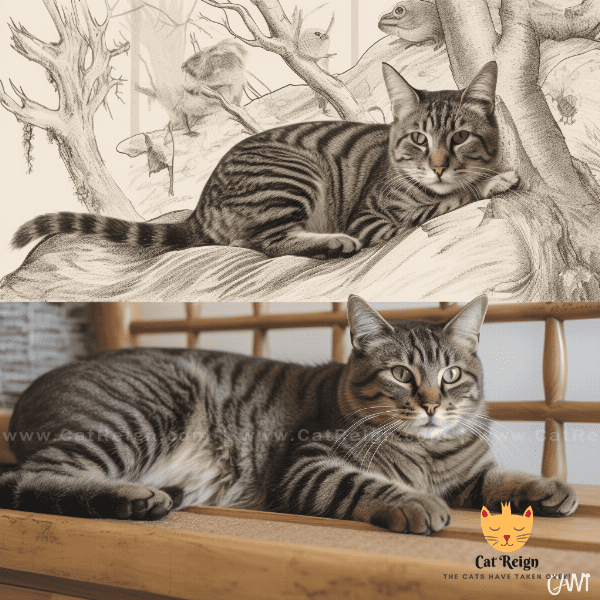
Cat Napping 101: Tips and Tricks for Helping Your Cat Sleep Better
Helping your cat get the rest they need can improve their health and wellbeing. Here are some tips and tricks to help your cat sleep better.
Provide a Comfortable Sleeping Space
Providing your cat with a comfortable and safe sleeping space is essential for their health and wellbeing. Consider using a bed made from natural materials, such as wool or cotton, as these materials are breathable and provide insulation. Place their bed in a quiet and secluded area of your home where they won’t be disturbed.
Encourage Playtime
Regular playtime can help your cat burn off excess energy and reduce stress and anxiety, which can improve their sleep quality. Interactive toys, such as feather wands or balls, can provide stimulation and exercise for your cat.
Stick to a Routine
Cats thrive on routine, and sticking to a consistent sleep routine can help them get the rest they need. Try to provide your cat with a consistent bedtime routine, such as a few minutes of playtime followed by a quiet and peaceful sleeping environment.
Avoid Disrupting Your Cat’s Sleep
Disrupting your cat’s sleep can cause stress and anxiety, which can negatively impact their health and wellbeing. Avoid making sudden movements or loud noises around your cat when they’re sleeping, and create a quiet and peaceful sleeping environment.
Consult with Your Veterinarian
If your cat is experiencing sleep issues despite your best efforts, it’s important to consult with your veterinarian. They can conduct a physical exam and recommend tests to diagnose the underlying cause of the sleep issues. They may also recommend medications or changes to your cat’s environment or routine to improve their sleep.
Final Thoughts
Helping your cat get the rest they need can improve their health and wellbeing. By providing a comfortable sleeping space, encouraging playtime, sticking to a routine, avoiding disrupting their sleep, and consulting with your veterinarian if necessary, you can help ensure that your feline friend is healthy, happy, and full of energy.
